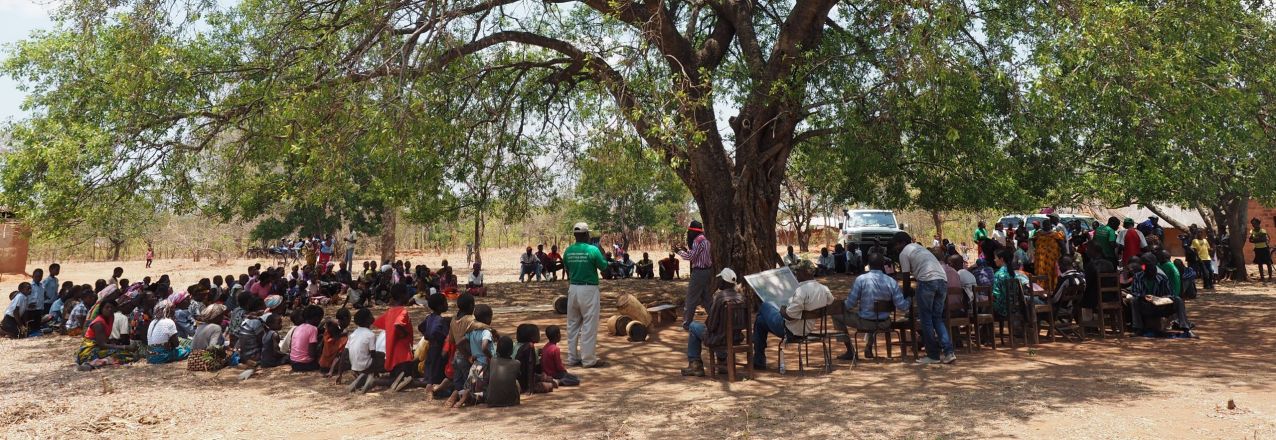Cross-posted from USAID Medium
In his leadership role, John Zimba, Chief Sandwe of the Nsenga People of Zambia’s Eastern Province has personally taken steps to help his people, particularly women, formally secure the rights to their land and the forests within their communities. The chief and his constituents are already seeing the benefits from protecting habitat and wildlife.
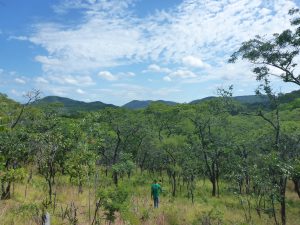
Located in the southern end of Zambia’s flagship national park, South Luangwa, the chiefdom has traditionally been home to abundant wildlife and dense forests; however, there are new pressures threatening this delicate ecosystem.
The chiefdom has recently been declared a new district with a new municipal town currently under development. In recent years a large-scale mining concession was awarded, and people from both within and outside the community have begun invading the forest to engage in small-scale, off-grid gold mining. All of these are occurring right next to habitat where an NGO manages a forest carbon project and companies maintain legal, regulated hunting concessions. Both of these provide income generating activities for the community.
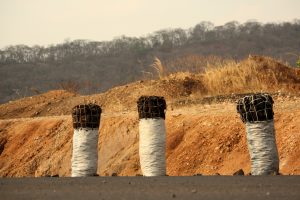
Despite the role of forests in combating climate change, until recently
Zambia had few ways to incentivize conservation. Without legal rights to the forest land, communities and residents could only benefit from forests by converting them into charcoal or agriculture. This lack of rights is one of a number of reasons that Zambia has had one of the highest rates of deforestation in Africa over the past decade.
“Even though we are in a very rural area, there are many interests in Sandwe. It is my job to organize, manage, govern and harmonize people and resources across the chiefdom,” says the chief. “We think this work on documenting land rights and forest rights will encourage development. With USAID’s support, we have gone through the effort to document the land rights of 10,000 agricultural parcels and to apply for community forest management rights.”
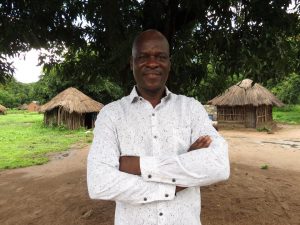
The chief is one of approximately 12 of Zambia’s 188 chiefs piloting customary land certification, offered through the USAID Integrated Land and Resource Governance project, in line with Zambia’s 2021 Lands Policy. He also supports the 2018 community forest management regulation that offers Zambian communities the opportunity to register their rights to forests and receive the many financial benefits that come from the land, such as non-timber forest products like mushrooms and forest carbon income.
Forest carbon payments are generated when communities and residents protect standing forests, which play a key role in reducing greenhouse gas emissions that cause climate change. In the past three years, more than 80 local community forest management groups have been registered, protecting over 1.5 million hectares of forests in Zambia.
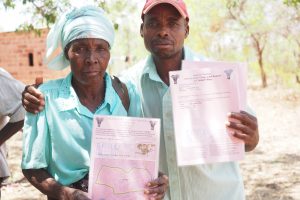
George Tembo, chairperson of the Community Resources Board that organizes action around management of forest and wildlife in the chiefdom notes that, “Since the coming of community forestry many people are benefiting from new development infrastructure and income. Our community members have realized the benefits of conserving wildlife habitats, and have started addressing threats like charcoal production and poaching.”
Chief Sandwe acknowledges that the work has started, but that it will be a long journey.
“By documenting our land, we can help to stop encroachment and the human-wildlife conflicts that come with it, land documentation has empowered individuals with a sense of ownership and responsibility over land. If we want people to protect the forest to combat climate change and to conserve the wildlife within this area, the community must benefit.
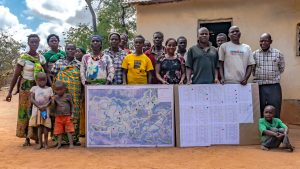
Developing new revenue sources is important for diversification and resilience of the chiefdom. The revenue from protecting the forest has helped motivate communities to continue protecting the forests during a low year for hunting. He says that: “This year, amidst COVID-19, the carbon fees made a positive impact; they supported our agricultural preparations and the availability of clean borehole sourced water within established villages across the chiefdom.”
Now that Chief Sandwe has official records on the locations of his communities and the chiefdom resources, he proactively plans for future development. He is using the information to bring together both women and men, groups and companies to use these land documentation maps to resolve issues early. “We are already seeing results,” he says. “Even in just these first few years, we are seeing that land disputes have become rare.”
The USAID Integrated Land and Resources Governance project supports improved land use planning for wildlife and forestry sectors, low cost and accessible land documentation for communities, and strategies to secure land rights, especially for women. The project also develops opportunities for communities to benefit from sustainable natural resource management.
About the author: Chando Mapoma is the Senior Development Outreach Communications Officer at USAID’s Mission in Zambia


